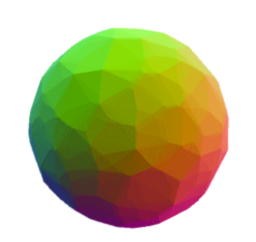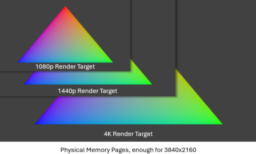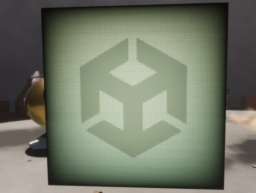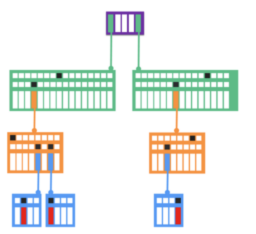- the paper introduces a level of detail technique for triangular meshes for use with ray tracing workloads
- proposes a data structure for hierarchically representing triangle meshes, allowing localized decisions for the desired mesh resolution per ray

- the blog post shows how to implement a scan-line rasterizer using D3D12 work graphs
- presents how to implement the rasterization using D3D12 work graphs, showing the C++ and HLSL implementation
- shows how to split work between GPU threads and how it affects performance

- the article discusses the author’s development of a real-time voxel rendering and authoring system in Unreal Engine
- covers the data structure usage, compute shader implementation as well as issues transition between UE4 and UE5

- the blog post discusses advice to help debug issues with GPU workloads
- covers how to track GPU progress, get debugging information from shaders, available tools, etc
- additionally provides a list of steps to follow when tracking down issues

- the article covers how to generate a 4D hypersphere
- discusses multiple generation techniques
- presents how to sample 4D noise uniformly

- the article discusses ten implementation details to consider when working on a Dynamic Resolution Scaling (DRS) solution
- covering memory handling, resolution choices, effects on frame timing, debugging advice, as well as UI rendering

- the blog post introduces the updated Vulkan documentation website
- it combines the spec, proposals, samples, shader language information, etc., into one place
- the blog post provides the reasoning and an overview of where to find the information

- the video tutorial presents how to implement a material effect that simulates an old LCD screen effect
- the effect combines scan lines, vignette fading, flickering, half-tone shading, and flipbook animations
- implementation is shown in Unreal and Unity Visual Scripting

- The master thesis provides an overview of the different trade-offs of volume data structures
- introduces a method for storing density data in block-compressed textures combined with deduplicating homogeneous nodes
- shows how this enables efficient flipbook animations

Thanks to Matt Pharr for support of this series.
Would you like to see your name here too? Become a Patreon of this series.